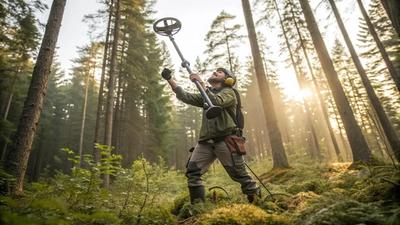
Kicking back in your own little slice of the great outdoors is nothing like anything else, especially when that outdoor area reflects your values and helps to preserve our beautiful Australian environment. Whether your backyard in the suburbs is large or your balcony in the city is small, designing a sustainable outdoor space is not only a trend but also a means of connecting with nature, saving valuable resources, and building a very pleasant refuge.
But where should you start? Don't worry, my friend! This guide will help you navigate the process of creating an environmentally friendly, equally beautiful outdoor space. Let's get right in and see how you might create a green haven from your backyard.
Acknowledging Sustainable Design in Australia
Let's discuss what "sustainable" actually means in an Australian outdoor environment before we get our hands dirty. Our special climate calls for a careful approach with its periods of drought, strong sunlight, and always-present risk of bushfires. Here, sustainability goes beyond appearances to include resilience, ingenuity, and honouring of our natural ecosystems.
Consider this: selecting plants suited for our local environment reduces water consumption. Choosing permeable paving will help rainwater sink to the ground, lowering runoff. Not least of all, the materials we choose for our furniture and decks might significantly impact things. It's about designing a place that complements rather than contradicts nature.
Water-wise Wonders: Counting Every Drop
Given Australia's limited resources, water is especially valuable; thus, creating an outdoor space with water-wise consideration is critical. These ideas should help you get going:
Rainwater Harvesting
First, give rainwater collecting some thought. Even a small water tank will gather rainfall from your roof for use in your garden or car washing. Your dependence on mains water can be much lessened by this easy action.
Efficient Irrigation
Think next of your irrigation system. Conventional sprinklers can waste a lot of water evaporatively. Choosing drip irrigation or soaker hoses lets water go straight to the plant roots, reducing waste and increasing effectiveness. By timing a timer, you can also guarantee that you only water when necessary—ideally early morning or late evening when evaporation is lowest.
Swales and Rain Gardens
Including swales or rain gardens in your landscape design is another deft trick. These gently sloping depressions allow rainwater runoff to be caught and filtered, enabling slow ground absorption and soil recharging. In addition to saving water, this lessens erosion.
Drought-Tolerant Plants
At last, and maybe most crucially, choose drought-tolerant plants. Native Australian plants need far less water than many alien species since they are naturally suited for our temperature. In the next section, we will explore plant choice more thoroughly.
Selecting Appropriate Plants: Celebrate Our Natural Beauty

Speaking of plants, this is where your outdoor area's sustainability can be much improved. Choosing native and climate-appropriate plants transforms many aspects.
Reduced Resource Consumption
First of all, as discussed, they are naturally suited to our particular environment, which implies they need less fertiliser and water and are usually more resistant to pests and diseases. Over time, this saves you money and time as well as lessens your environmental impact.
Supporting Local Biodiversity
Second, support of our local biodiversity depends critically on native plants. By giving native birds, insects, and other animals food and cover, they help to build a healthy ecosystem right in your backyard. Imagine drawing vibrant native birds and buzzing bees to your yard; it's quite a satisfying experience.
Choosing the Right Species
Think on the particular circumstances of your location when selecting plants. Is your soil either sandy or clay-based? Your garden faces either full sun or shade. Local nurseries with native plant expertise can provide priceless guidance on the best species for your particular requirements. Consider adding a range of plants with varying flowering times to offer year-round interest and assist a greater spectrum of wildlife.
Building with the Planet in Mind: Sustainable Materials and Features
The sustainability of your space can be much influenced by the materials you choose for your outdoor features and buildings. Choose environmentally friendly substitutes for furniture, pavings, and decking.
Reclaimed and Sustainable Materials
Your furniture or decking might be made from reclaimed wood. This not only creates a distinctive, rustic appearance but also lessens the need for fresh timber, so preserving our forests. Another great sustainable resource, fast-growing, strong, and durable, is bamboo.
Permeable Paving
Choose permeable materials for paving, including gravel, decomposed granite, or permeable pavers. These help to reenergize groundwater by letting rainwater pass through to the soil below, lowering runoff. Steer clear of expansive areas of asphalt or impermeable concrete to help to create the urban heat island effect.
Eco-Friendly Outdoor Furniture
Look for outdoor furniture composed of sustainably sourced timber, recycled plastics, or even robust, weather-resistant wicker made from natural materials. Steer clear of furniture constructed of hazardous or unsustainable materials.
Consulting Sustainable Home Builders
See local home builders who have expertise in sustainable building techniques if you are thinking about erecting more major outdoor structures, such as pergolas or sheds. They can provide recommendations for environmentally friendly building materials and methods of construction that reduce impact.
Energy Efficiency Outside: Lighting Your Nights Sustainably
We can choose to be energy-efficient even in our outdoor areas. One major area to give thought to is lighting. Wherever you can, choose solar-powered outside lights. These require no wiring, are simple to install, and use the sun's energy for nighttime illumination of your garden. They range in style from decorative lanterns to pathway lights.
Solar-Powered Lighting
Wherever you can, choose solar-powered outside lights. These require no wiring, are simple to install, and use the sun's energy for nighttime illumination of your garden. They range in style from decorative lanterns to pathway lights.
Energy-Efficient LED Bulbs
Choose energy-efficient LED bulbs if you require mains-powered outside lighting. Their far longer lifetime reduces waste by using much less energy than conventional incandescent bulbs.
Minimizing Light Pollution
Think about where to put your outside lighting to reduce light pollution. When necessary, direct light downward rather than skyward. This lets you enjoy the wonders of the night sky and helps to safeguard nocturnal life.
Creating Shade
Establishing shade is another element of outdoor energy efficiency. By planting trees or building shade structures like pergolas or shade sails, you can lessen the direct sunlight that finds your house and outdoor space. This can help to lower indoor air conditioning needs and keep your outdoor area cooler in summer.
Establishing a Haven for Wildlife: Welcome Our Feathered and Furred Companions

An outdoor space that is really sustainable is one that supports nearby wildlife. Simple actions can help your garden appeal more to birds, bees, and other helpful species.
Providing Water Sources
To supply fresh water, think about building a little pond or birdbath. Native birds, particularly in hot summers, will appreciate it.
Planting for Pollinators
To draw bees and other pollinators, scatter a range of native flowering plants. A good ecosystem depends on these; therefore, they will enable your garden to flourish.
Creating Insect Habitats
For insects to drink from, leave out shallow dishes of water containing pebbles. To give helpful insects cover, you can also design little "bug hotels" out of natural materials including hollow stems, bamboo, and twigs.
Avoiding Harmful Chemicals
Steer clear of pesticides and herbicides in your yard since they can endanger other wildlife, including helpful insects. Choose instead organic sprays or drawing predatory insects as natural means of control for pests.
Composting and Waste Reduction—Closing the Loop
Let's now finally discuss waste. Our goal in a sustainable outdoor space is to recycle as much as feasible and cut waste.
Setting Up a Compost System
First, arrange your garden trash—including leaves, grass clippings, and pruned branches—into a composting system. Excellent natural fertiliser, compost, will improve your soil and help lower demand for synthetic fertilisers. Some kitchen waste can also be composted to help to further cut household waste.
Reusing Materials
Try to recycle items wherever you are working in your garden. Old pots can be used for purposes other than decoration; fallen branches can be used to provide climbing plants natural edging or supports.
Adopting these ideas will help you turn your outdoor area into an environmentally friendly haven that helps you as well.
Your Natural Outdoor Paradise Awaits!
Creating an outdoor sustainable space is a voyage rather than a destination. Beginning with little adjustments, progressively add more environmentally friendly habits as you go. The secret is to be aware of your decisions and design a place that captures your affection for the Australian surroundings.
With any luck, this book will motivate you to begin your own sustainable outdoor project. What is your best advice for designing an environmentally friendly outdoor area? Comments below allow you to share your ideas and experiences; we would really like to hear from you! Together, let's create our Australian backyard paradise of sustainability and beauty.
Related Posts

Is Metal Detecting in the Wilderness a Profitable Hobby?
Discover if metal detecting pays—learn which finds are valuable, how to price silver, manage costs, stay legal, and turn treasure into real cash.

Your Ultimate Checklist for Baby's First Camping Trip
Planning a baby's first camping trip? This guide provides a thorough checklist to ensure a magical, safe, and comfortable experience. From choosing the perfect campsite with essential amenities to packing for safety, comfort, and nutrition, we cover all the bases. Learn how to create a cozy sleeping space under the stars, handle health and safety issues like sun and insect protection, and engage your little one with the wonders of nature. With practical advice on organization and preparation, this article helps you create cherished family memories in the great outdoors.

What Outdoor Activities Can the Whole Family Enjoy on the Sunshine Coast?
Planning a family vacation to the Sunshine Coast? This Queensland paradise offers stunning beaches, lush hinterlands, and unforgettable wildlife encounters. From building sandcastles at Kings Beach to exploring the Glass House Mountains and visiting the Australia Zoo, there's something for everyone. Discover the best outdoor activities for all ages and create lasting memories on the Sunny Coast.